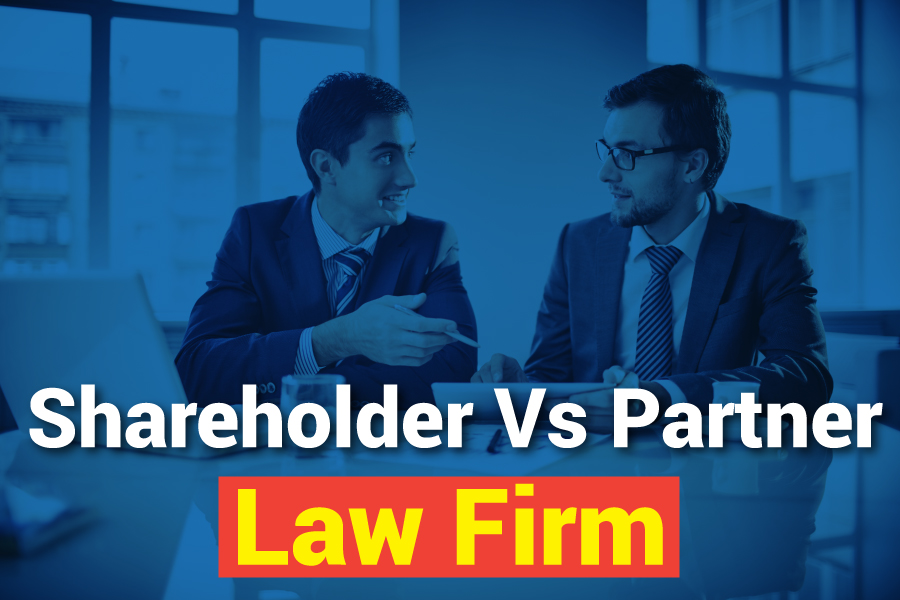Understanding the distinctions between a shareholder and a partner in a law firm is crucial for those navigating the legal profession or considering their career paths within it. Both roles hold significant responsibilities and offer unique advantages, but they also come with distinct legal and operational implications. The structure of law firms can vary widely, with some operating under a partnership model and others incorporating as professional corporations, where shareholders hold equity. This article delves into the roles, responsibilities, and key differences between shareholders and partners in a law firm, shedding light on their impact on firm governance, profit distribution, and decision-making processes. By understanding these distinctions, aspiring lawyers and current professionals can make informed decisions about their career trajectories and contributions to their firms.
Shareholder Vs Partner In Law Firm
In a law firm, a shareholder typically holds equity in a professional corporation and may have voting rights and profit-sharing based on their shares. A partner, on the other hand, is usually part of a partnership and has a more direct role in management and decision-making. Both roles have distinct responsibilities and legal implications.
Roles And Responsibilities Of A Shareholder Vs Partner In A Law Firm
In the legal world, the terms “shareholder” and “partner” represent two different types of ownership and management structures within law firms. A shareholder in a law firm usually refers to an individual who owns shares in a professional corporation. These shares entitle the shareholder to a portion of the firm’s profits, as well as voting rights on significant decisions. Shareholders’ influence and income are typically proportional to the number of shares they hold.
Conversely, a partner in a law firm is an individual who has entered into a partnership agreement with other lawyers. This partnership model is often more collaborative, with partners sharing profits and losses based on predetermined arrangements. Partners usually have equal voting rights and a say in the firm’s management, irrespective of their financial contribution.
One of the main differences lies in liability. Shareholders in a professional corporation have limited liability, meaning they are only financially responsible up to the amount they have invested in shares. Partners, however, may have unlimited liability, depending on the partnership agreement, exposing them to personal financial risk if the firm faces legal or financial trouble.
Additionally, the way profits are distributed varies between the two models. Shareholders receive dividends based on their shares, which can fluctuate based on the firm’s profitability and the number of shares owned. Partners, on the other hand, often receive a share of the profits according to the partnership agreement, which may consider factors like seniority, billable hours, and client acquisition.
In terms of governance, shareholders often play a more passive role, with a board of directors or executives managing the firm’s operations. Partners, being more deeply involved in daily management, participate in strategic planning, client management, and decision-making processes. This involvement gives partners a more hands-on approach to the firm’s direction and success.
Lastly, the pathway to becoming a shareholder or a partner can differ significantly. Becoming a shareholder typically involves purchasing shares, while becoming a partner usually requires years of dedication, proving one’s worth through billable hours, client relationships, and contributions to the firm’s growth. Both pathways demand commitment and excellence, but they cater to different career aspirations and professional inclinations.
Key Differences Broken Down
1. Ownership Structure
In a professional corporation, shareholders own equity and have limited liability, which protects their assets. In a partnership, partners share ownership, profits, and liabilities, often bearing more personal financial risk.
2. Profit Distribution
Shareholders receive dividends based on their shares, which can be influenced by the firm’s performance and individual shareholding. Partners share profits according to the partnership agreement, considering factors like seniority and contributions.
3. Management and Decision-Making
Shareholders typically vote on major decisions but do not manage daily operations, which are handled by executives. Partners are actively involved in management, contributing to strategic decisions and client relations.
4. Liability
Shareholders benefit from limited liability, minimizing personal financial exposure. Partners may face unlimited liability, making them more personally accountable for the firm’s debts and legal issues.
5. Career Pathways
Becoming a shareholder usually involves purchasing shares and may require an initial financial investment. Becoming a partner often requires years of dedication, building a reputation, and contributing significantly to the firm’s success.
Comparison Highlights
Ownership:
- Shareholders: Equity holders in a corporation.
- Partners: Joint owners in a partnership.
Liability:
- Shareholders: Limited to investment.
- Partners: Potentially unlimited.
Profit Distribution:
- Shareholders: Dividends based on shares.
- Partners: Shared based on agreement.
Decision-Making:
- Shareholders: Vote on major decisions.
- Partners: Actively manage the firm.
Career Path:
- Shareholders: Purchase shares.
- Partners: Earn partnership through contributions.
Alternative Perspective: Advantages And Disadvantages
While both shareholders and partners play crucial roles in a law firm, their advantages and disadvantages can influence career decisions.
For shareholders, the primary advantage is limited liability, which protects personal assets from the firm’s debts and legal issues. This structure also allows for passive income through dividends, making it attractive for those seeking financial investment opportunities without daily management responsibilities.
On the other hand, partners benefit from direct involvement in the firm’s operations and strategic direction. This hands-on approach can be fulfilling for those who thrive on leadership and decision-making. However, the potential for unlimited liability can be a significant drawback, as it exposes personal finances to greater risk.
Additionally, the profit-sharing model in partnerships can foster a collaborative environment, encouraging teamwork and shared goals. Yet, this can also lead to disputes if the profit-sharing agreement is perceived as unfair or if contributions are not equally recognized.
Legal Implications And Career Considerations
Legal Responsibilities: Shareholders must comply with corporate regulations, including governance and reporting requirements. Partners must adhere to partnership agreements and legal obligations specific to partnerships.
Financial Commitments: Shareholders invest in shares, which can appreciate or depreciate based on the firm’s performance. Partners may need to contribute capital and reinvest profits into the firm’s growth.
Professional Growth: Shareholders can benefit from the firm’s overall success and capital appreciation. Partners can achieve professional fulfillment through leadership roles and direct impact on the firm’s success.
Conclusion
When choosing between becoming a shareholder or a partner in a law firm, it is essential to consider personal career goals, financial risk tolerance, and desired involvement in firm management. Shareholders enjoy the benefits of limited liability and potential passive income, while partners have the opportunity to play a significant role in the firm’s strategic direction and daily operations. Understanding these differences can help legal professionals make informed decisions that align with their professional aspirations and risk preferences.
FAQ’s
What Is The Main Difference Between A Shareholder And A Partner In A Law Firm?
A shareholder owns shares in a professional corporation with limited liability, while a partner is part of a partnership, often with more direct management roles and potentially unlimited liability.
How Are Profits Distributed Between Shareholders And Partners In A Law Firm?
Shareholders receive dividends based on their shares, while partners share profits according to the partnership agreement, which may consider seniority and contributions.
What Are The Liability Implications For Shareholders And Partners In A Law Firm?
Shareholders have limited liability, protecting their assets. Partners may face unlimited liability, exposing them to personal financial risk if the firm encounters legal or financial issues.
What Career Path Is Required To Become A Shareholder Or A Partner In A Law Firm?
Becoming a shareholder typically involves purchasing shares, while becoming a partner requires years of dedication, proving one’s worth through billable hours, client relationships, and contributions to the firm’s growth.
Which Role Involves More Management Responsibilities In A Law Firm: Shareholder Or Partner?
Partners generally have more management responsibilities, actively participating in strategic planning and daily operations, whereas shareholders vote on major decisions but do not manage daily operations.
Robert Stewart is a seasoned law blog writer with a passion for translating complex legal concepts into accessible, informative content. With a keen eye for detail and a knack for storytelling, Robert crafts engaging articles that educate and empower readers in the realm of law.
Drawing upon his extensive experience in the legal field, Robert brings a wealth of knowledge to his writing, covering a diverse range of topics including personal injury, family law, criminal defense, and more. His articles combine thorough research with clear, concise language, making them valuable resources for both legal professionals and laypeople alike.


